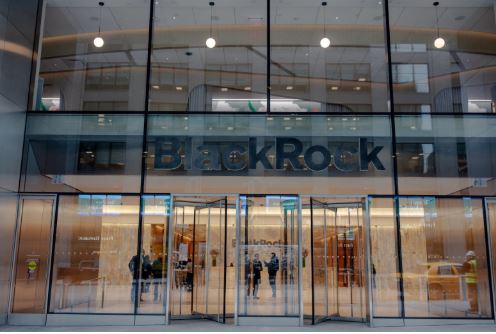Slot Symbols Explained: From Cherries to Pharaohs
Why Symbols Matter
Symbols are the language of slots. Before you notice sound or motion, your brain identifies shapes and patterns: fruit silhouettes, bold sevens, hieroglyphic masks, or sparkling gems. When symbols are clear, you understand the outcome instantly and the whole round feels smoother—anticipation, reveal, and a tidy moment of closure.
Great sets use strong silhouettes, consistent color stories, and a visual hierarchy. That hierarchy tells you, without words, which icons are common and which are rarer, which belong together, and which trigger a special moment. Think of this guide as a pocket dictionary that helps you read that language fast.
Classic Icons: Fruit, Bells, Bars, and Sevens
Cherries & Citrus: These harken back to early fruit machines. Designers keep them glossy and high-contrast so they’re easy to spot. Cherries often signal “classic vibes”—bright, cheerful, and straightforward.
Bells: Borrowed from vintage hardware, bells became a shorthand for celebration. Modern sets use them sparingly, often with metallic shading and a crisp highlight that stands out against darker backgrounds.
Bars: Stacked rectangles labeled “BAR,” sometimes in single/double/triple variations. Their blocky silhouette makes them legible on small screens, which is why you still see them in retro-styled titles.
Sevens: The definitive neon icon. Designers give 7s extra glow, beveled edges, or a drop shadow so they read as a focal point. If a game leans into sevens, expect bolder palettes and a little theatricality.
Card Royals & Number Symbols
Many themes include A, K, Q, J, and 10. These “royals” act like a bridge between ornate, picture-style icons and the simpler end of the set. Good design keeps the lettering big, the edges clean, and the colors consistent—often one hue family per letter—so scanning a line is effortless.
When you see a mix of picture icons and royals, think “two tiers”: characters/objects for theme flavor and royals for steady rhythm.
Wilds, Scatters & Feature Icons
Wilds: A wild icon is a flexible symbol that can substitute for others in certain situations, helping a result come together. Designers usually stamp it with the word “WILD” or a distinctive emblem, then give it a strong outline so you can spot it instantly.
Scatters: These often unlock a special sequence when enough appear, sometimes regardless of exact position. To telegraph importance, scatters might glow, pulse, or sit on ornate frames. You’ll know them by their distinct borders or animations.
Other feature icons: Keys, compasses, scrolls, or shards may act as triggers in specific games. Look for a help icon that explains what each emblem does so you’re never guessing mid-round.
Thematic Sets: From Cherries to Pharaohs
Modern lobbies are full of themed worlds—Egyptian deserts, mythic pantheons, retro diners, neon skylines. In Egyptian sets, you’ll find masks, scarabs, ankhs, and the familiar image of a pharaoh. Designers use gold accents, lapis blues, and sandstone tones to make symbols pop; sharp contrast keeps masks legible even on small screens.
Mythic themes lean on gods, relics, and constellations with jewel tones and glowing edges; retro themes use chrome, vinyl records, and bold signage. Whatever the world, the rule is the same: your eye should read the important shapes without effort.
Fast Spotter’s Guide
Give any game thirty seconds. Identify the picture icons (the “cast”), the royals (A–10), any wild substitute, and any scatter trigger. If you want a tidy place to practice this quick read across multiple styles, the American Luck social casino makes it easy to compare themes side by side, save crisp symbol sets, and build a small favorites list for relaxed sessions.
Common Misreads & Quick Fixes
- “I can’t tell symbols apart.” Increase text size if available, lower screen brightness slightly to improve contrast, and choose titles with thicker outlines and simpler shapes.
- “I miss wilds or scatters when the screen gets busy.” Look for games that label these icons with clear frames or the words themselves. Many also add a distinct glow before a reveal.
- “Backgrounds distract me.” Pick themes with softer backdrops and stronger foreground separation. Matte backgrounds help picture icons stand forward.
- “Too much going on during reveals.” Switch to titles with tighter motion—shorter transitions, fewer overlapping effects, and clean end cards.
- “I forget what a symbol does.” Tap the help panel and skim the one-page summary. A good layout shows icons next to short, plain-English notes.
Conclusion
Symbols are the heartbeat of a slot: cherries and bells for classic charm, bars and sevens for neon flair, royals for steady cadence, and themed pictures—from scarabs to regal pharaohs—for world-building. When you learn to spot wilds, scatters, and the visual hierarchy that binds a set together, each round becomes easier to follow and more enjoyable to watch. Favor clear silhouettes, consistent colors, and supportive backgrounds, and you’ll instantly read results—leaving more attention for the art, music, and tiny celebrations that make short sessions delightful.





